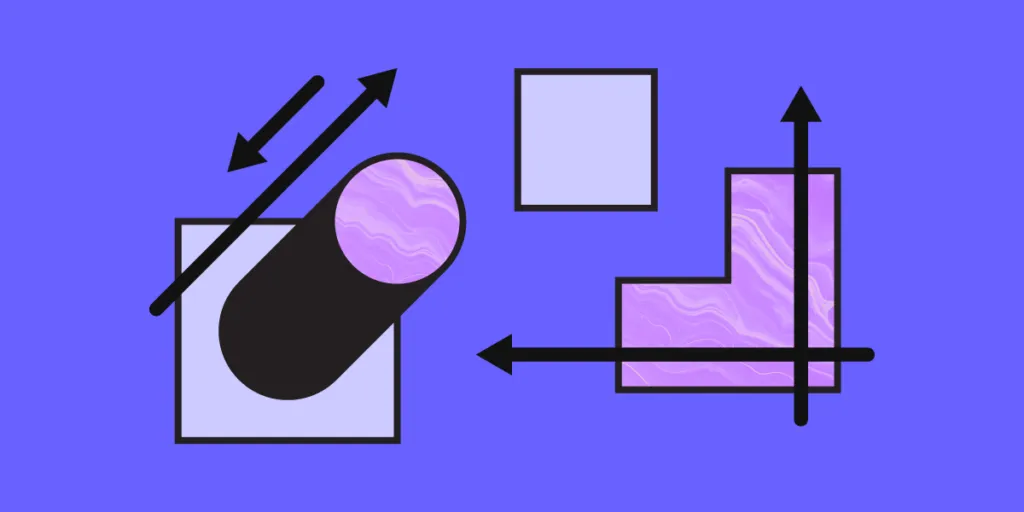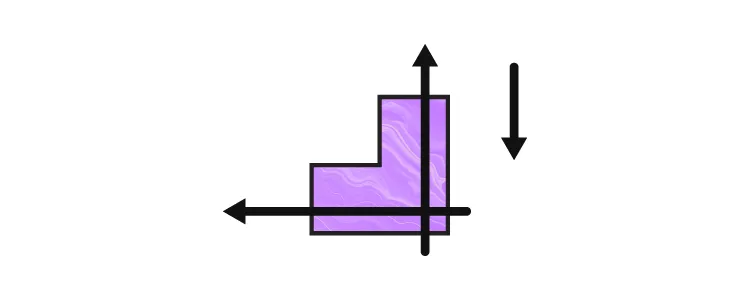ROI of DesignOps: All You Need to Know About Quantifying DesignOps’ Impact

Table of contents
Quantifying the impact of DesignOps is crucial for managers to solve problems and get buy-in from stakeholders. But how do you measure DesignOps? And, how do you know which metrics and methodology to apply?
This article summarizes Patrizia Bertini’s webinar, Measuring DesignOps Impact, hosted by UXPin in December 2021. In it, Patrizia shares valuable insights about estimating the impact that DesignOps has on design, business value, and the organization.
“DesignOps is about transforming reality. This is why measuring the status quo, and the impact of every initiative is so critical. It’s critical for everyone, and it’s critical for the success of DesignOps practice.” Patrizia Bertini – Associate Design Operations Director at Babylon.
One of the keys to solving DesignOps inefficiencies is adopting the right tools. UXPin with Merge technology can help teams of any size scale DesignOps. Learn more about it here: UXPin Merge.
Why is it Important to Track DesignOps ROI?
According to Voucherclub’s 2020 study, a leading UK money-saving brand, the average UK office worker is only productive for 2 hours and 53 minutes per working day.
In a 2019 survey from Korn Ferry in the United States, 67% of respondents said they spend too much time in meetings/calls, with 34% saying they spend between 2-5 hours a day in meetings that don’t accomplish anything!
Now, think about the times you’ve had to pay design teams overtime to meet deadlines. If your designers were more productive, would you save money on overtime and missed deadlines?
Organizations don’t hire designers to complete admin work or sit in meetings – regardless whether those meetings are productive or not. Designers must do what they do best, design!
DesignOps is supposed to relieve these design-related inefficiencies to create more productive designers. The problem is that many inefficiencies are invisible but have tangible effects on design teams’ productivity.
Here are some examples of inefficiency cause and effect.
Causes:
- Inconsistent end-to-end workflows
- Poor cross-functional collaboration
- Inconsistent tool usage
- Inconsistent templates
- Lack of processes
- Poor engagement models
Effects:
- Long working hours
- High rate of rework
- Delays
- Poor outcome quality
- High team churn
- Low level of engagement
The only way to tell whether DesignOps is effective is by using KPIs and metrics. Stakeholders want to quantify the impact of DesignOps to measure the return on investment – for DesignOps and UX as a whole.
How to Pick the Right Metric to Measure DesignOps’ ROI?

DesignOps managers use inward-facing metrics that measure the design team’s performance and behavior. These operational dimensions allow managers to assess the impact teams create through workflows, design processes, and project execution.
Define the Problem: Efficacy vs. Efficiency

When choosing how to measure DesignOps, it’s essential to recognize the difference between efficacy and efficiency, because you evaluate these differently.
Efficacy is about behavior – doing the right things. It produces qualitative results that are often subjective. Some efficacy example metrics include:
- Empathy and ongoing user engagement
- Ideation and experimentation cycle times
- Composition of teams’ skills (skill matrix)
- Design skills’ distribution
- Perceived value of design by cross-functional partners
- Designer satisfaction and retention
Efficiency, on the other hand, is measurable and quantifiable using numbers, percentages, and ratios. It’s about the processes and doing things correctly. You can set a baseline or status quo marker and measure DesignOps’ impact against that metric.
Some examples of measuring efficiency include:
- Tools’ ROI (cost/engagement/adoption)
- Testing and prototyping lead time (time)
- Number and type of quality reviews
- Team productivity (resources utilization)
- End-to-end delivery time (time)
The key takeaway when defining the problem is that you’ll have qualitative and quantitative data for measuring DesignOps. Measuring efficiency is vital because it gives you a clear picture of cause and effect.
Define the Area for Improvement in 3 Steps
Defining the area for improvement in DesignOps is similar to following the design thinking process. Patrizia Bertini identifies the user and finding the areas for improvement with two triangles.
First, you need to know and define your main users. How is experiencing the biggest pain point? In the first triangle, you have:
- Business
- Design team
- Design leader
When you identify a problem, you must recognize how it affects these three primary stakeholder groups. It’s a balancing act where DesignOps must find ways to satisfy all three!
The second step is defining the dimensions that matter. What aspects can you improve to affect efficiencies and improve performance? In your second triangle, you have:
- Quality
- Cost
- Time
In the last step, you play impact where there are three possible areas of intervention for each user.
For example, the design team is unhappy because they spend too much time doing rework. The first step is to discover how much this rework time is costing the business. You learn that the rework rate is 28% which means every project costs a third more than it should! The result is extra work and churn.
Patrizia’s three-step methodology is an effective way for a DesignOps manager to identify a design problem and its impact on the business.
4 Considerations When Quantifying the Impact of DesignOps
In our free webinar, Measuring Design Impact, Patrizia Bertini shares four key takeaways DesOps managers must consider when quantifying the impact of DesignOps.
1) Every design team has inefficiencies
Acknowledging that there are invisible inefficiencies is the first step towards efficiency. A DesignOps manager must look for problems to solve, which means talking to designers and stakeholders.
2) Inefficiencies change constantly
Whenever you solve a problem, there is a cause and effect. Inefficiencies and efficiencies often propagate. As you solve a problem in one area, issues tend to pop up somewhere else. And vice versa, efficiencies propagate as you create more efficiencies.
DesignOps managers must Apply Systems Thinking to get a holistic view of design and thus be able to identify the propagation of efficiencies and inefficiencies as they arise.
3) Measure inefficiencies and define clear metrics
If you cannot measure the inefficiencies and the impact, you haven’t framed the problem properly yet.
It takes time. It’s about framing the problem correctly and identifying the metrics that will help you get the buy-in from stakeholders and prove the impact DesignOps has on the rest of the team.
4) DesignOps needs partnerships
DesignOps is cross-functional – you need partnerships to solve problems. Because of design’s cross-functional and collaborative nature, solving the design team’s inefficiencies will create efficiencies across the organization.
Use this domino effect to create partnerships and maximize design’s impact across the business. The goal is to find quantitative data from other departments that you can trace back to DesignOps efficiencies.
Summary
It’s crucial to measure the impact of the efficiencies DesignOps creates so that managers can present this value to stakeholders.
DesignOps managers must recognize the difference between efficacy and efficiency when identifying the problem because only the latter produces quantifiable data we can present to stakeholders as numbers, percentages, and ratios.
Lastly, DesignOps is about collaboration and finding partners to solve problems. A DesignOps manager must look beyond design team to formulate these partnerships and identify ways design creates efficiencies in other parts of the organization.
Further Reading
This article summarizes a few key points from UXPin’s webinar on Measuring DesignOps Impact with Patrizia Bertini, Associate Design Operations Director at Babylon. We encourage you to watch the 1-hour webinar where Patrizia shares her wealth of knowledge and actionable tips for DesignOps managers.
DesignOps 101
If you’re looking for more DesignOps knowledge and insights, you can also check out our free eBook, DesignOps 101: Guide to Design Operations. This free guide features six chapters, each written by DesignOps industry leaders. Topics include:
- What is DesignOps?
- The Importance of DesignOps
- The Impact of DesignOps
- How DesignOps Works
- How to Get Started With DesignOps in Your Company
- DesignOps Tools
DesignOps Pillar: How We Work Together
DesignOps leaders are responsible for team management, too. Get our eBook about building a stellar design team, setting up helpful rituals and long-lasting processes, hiring and onboarding new designers that we wrote in collaboration with DesignOps leaders at Salesforce, Visa, Dixa, Citrix, and Roche.
Learn more about this resource: DesignOps Pillar: How We Work Together.
UXPin is proud to provide this free content to help develop and evolve DesignOps practices. We welcome you to learn more about our revolutionary code-based technology Merge – a tool that solves many DesignOps challenges by bridging the gap between design and development.



